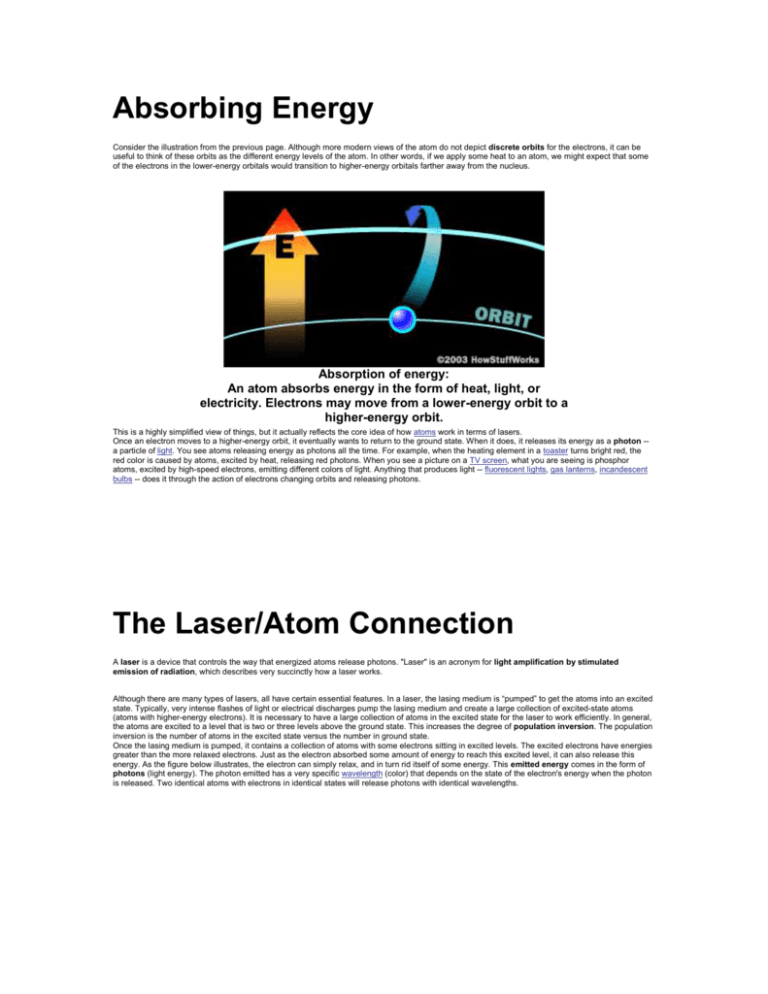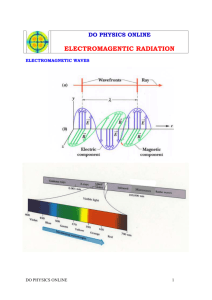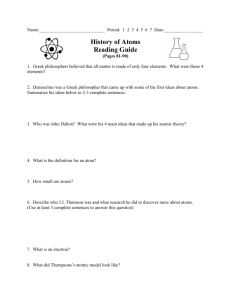Ruby Lasers - Binghamton
advertisement

Absorbing Energy Consider the illustration from the previous page. Although more modern views of the atom do not depict discrete orbits for the electrons, it can be useful to think of these orbits as the different energy levels of the atom. In other words, if we apply some heat to an atom, we might expect that some of the electrons in the lower-energy orbitals would transition to higher-energy orbitals farther away from the nucleus. Absorption of energy: An atom absorbs energy in the form of heat, light, or electricity. Electrons may move from a lower-energy orbit to a higher-energy orbit. This is a highly simplified view of things, but it actually reflects the core idea of how atoms work in terms of lasers. Once an electron moves to a higher-energy orbit, it eventually wants to return to the ground state. When it does, it releases its energy as a photon -a particle of light. You see atoms releasing energy as photons all the time. For example, when the heating element in a toaster turns bright red, the red color is caused by atoms, excited by heat, releasing red photons. When you see a picture on a TV screen, what you are seeing is phosphor atoms, excited by high-speed electrons, emitting different colors of light. Anything that produces light -- fluorescent lights, gas lanterns, incandescent bulbs -- does it through the action of electrons changing orbits and releasing photons. The Laser/Atom Connection A laser is a device that controls the way that energized atoms release photons. "Laser" is an acronym for light amplification by stimulated emission of radiation, which describes very succinctly how a laser works. Although there are many types of lasers, all have certain essential features. In a laser, the lasing medium is “pumped” to get the atoms into an excited state. Typically, very intense flashes of light or electrical discharges pump the lasing medium and create a large collection of excited-state atoms (atoms with higher-energy electrons). It is necessary to have a large collection of atoms in the excited state for the laser to work efficiently. In general, the atoms are excited to a level that is two or three levels above the ground state. This increases the degree of population inversion. The population inversion is the number of atoms in the excited state versus the number in ground state. Once the lasing medium is pumped, it contains a collection of atoms with some electrons sitting in excited levels. The excited electrons have energies greater than the more relaxed electrons. Just as the electron absorbed some amount of energy to reach this excited level, it can also release this energy. As the figure below illustrates, the electron can simply relax, and in turn rid itself of some energy. This emitted energy comes in the form of photons (light energy). The photon emitted has a very specific wavelength (color) that depends on the state of the electron's energy when the photon is released. Two identical atoms with electrons in identical states will release photons with identical wavelengths. Ruby Lasers A ruby laser consists of a flash tube (like you would have on a camera), a ruby rod and two mirrors (one half-silvered). The ruby rod is the lasing medium and the flash tube pumps it. 1. The laser in its non-lasing state 2. The flash tube fires and injects light into the ruby rod. The light excites atoms in the ruby. 3. Some of these atoms emit photons. 4. Some of these photons run in a direction parallel to the ruby's axis, so they bounce back and forth off the mirrors. As they pass through the crystal, they stimulate emission in other atoms. 5. Monochromatic, single-phase, columnated light leaves the ruby through the half-silvered mirror -- laser light!






